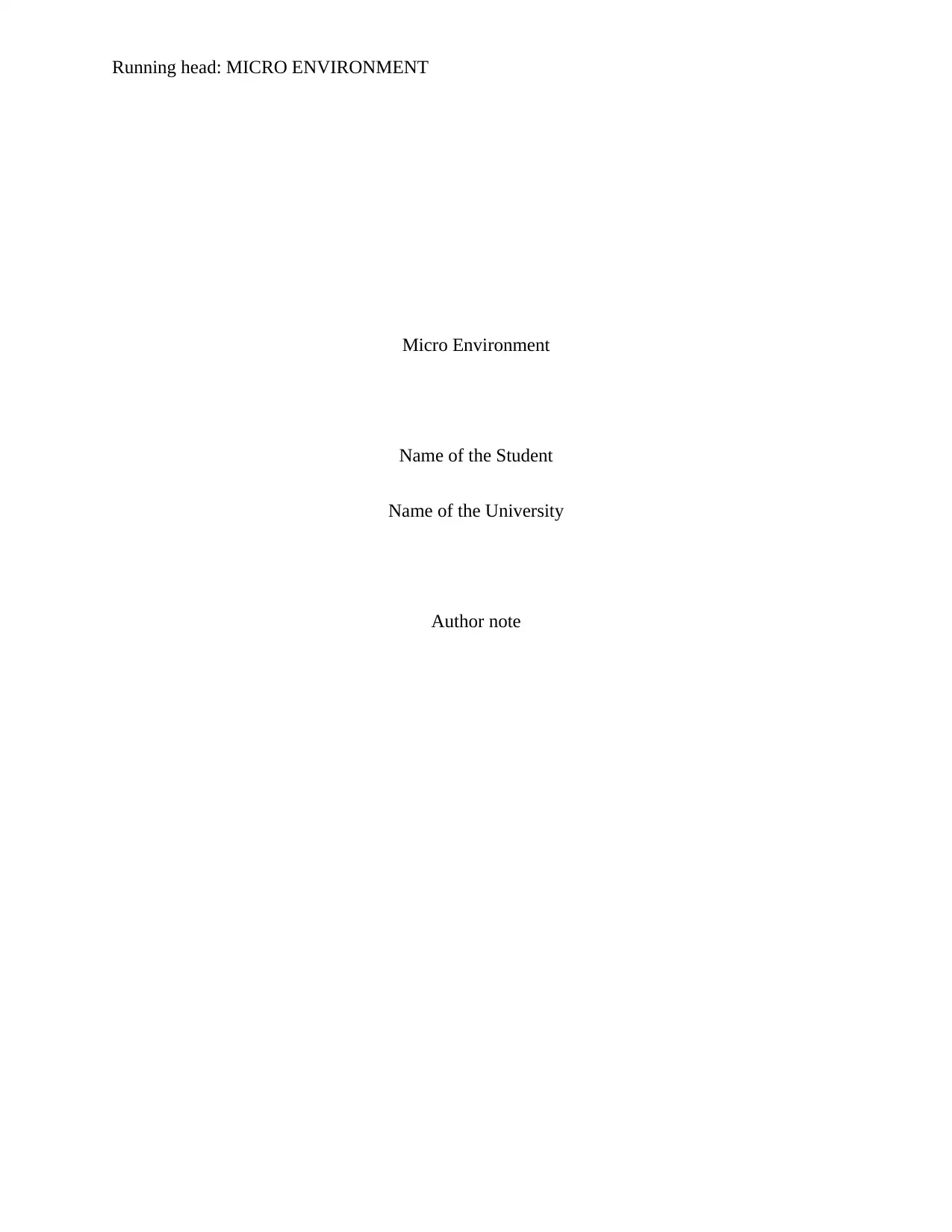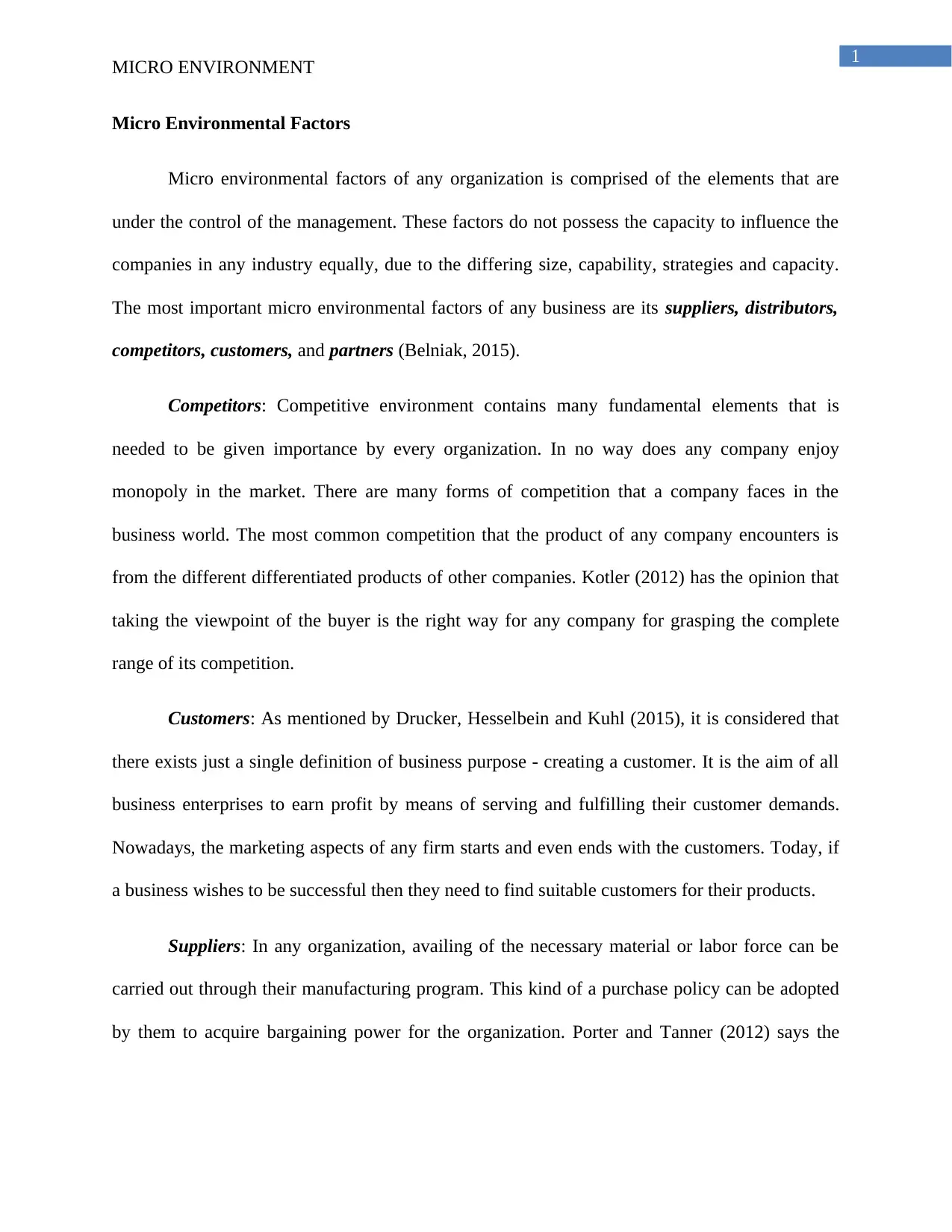Micro Environment Analysis Report for Business Operations and Strategy
VerifiedAdded on 2019/10/30
|4
|695
|180
Report
AI Summary
This report provides an in-depth analysis of the micro environment within a business context. It examines key elements such as competitors, customers, suppliers, distributors, and partners. The report highlights the significance of understanding these factors in formulating effective business strategies. It explores the dynamics of competitive landscapes, customer relationships, supplier interactions, and the impact of distribution channels. Furthermore, it discusses the influence of business partners and their effect on organizational strategies. The report emphasizes the importance of a comprehensive micro-environmental analysis for successful business operations and long-term growth. The report also provides references to the relevant academic literature.
1 out of 4








![[object Object]](/_next/static/media/star-bottom.7253800d.svg)